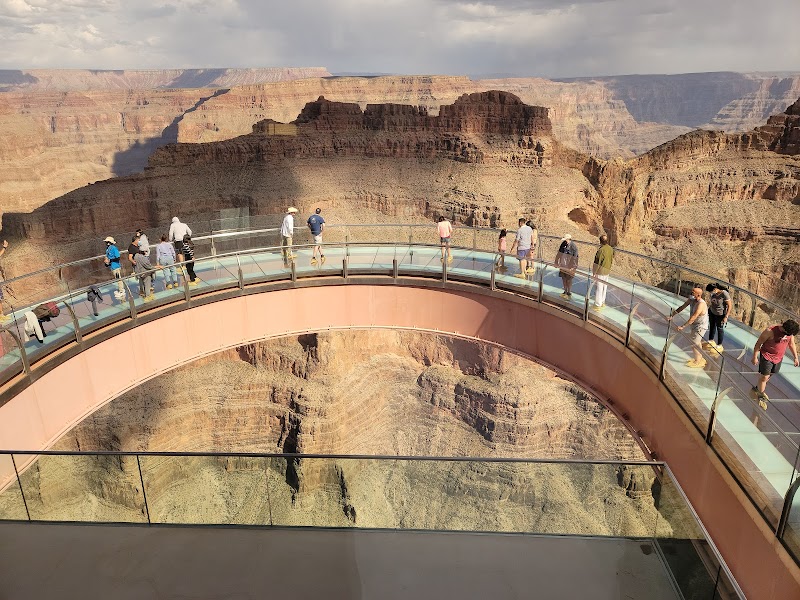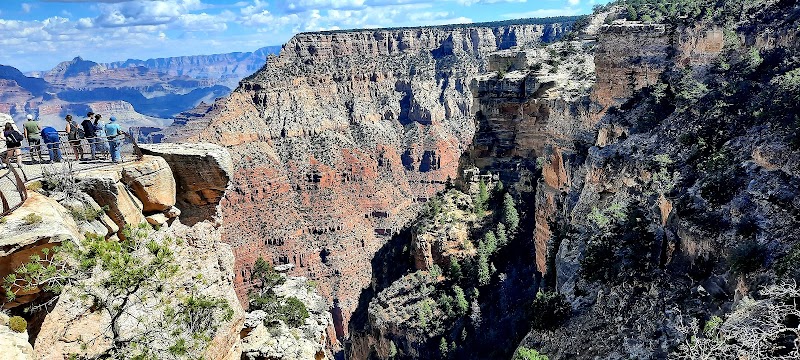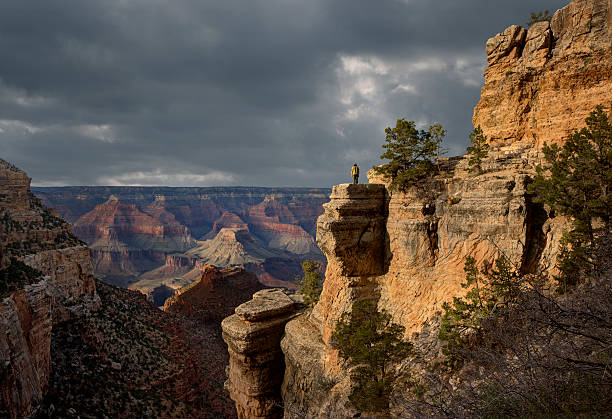Welcome to the Grand Canyon
Welcome to the majestic Grand Canyon! This remarkable natural wonder stretches an impressive 277 miles, offering awe-inspiring vistas and an incredible depth. It is home to famous attractions such as the sky-high lookout points, dramatic river rapids, and ancient geological formations. Every year, millions of tourists flock to the Grand Canyon to appreciate its unique beauty and unravel the secrets hidden within its crimson walls. A tourist map can serve as your trusty companion on this journey.
As you embark on your adventure, the tourist map will guide you through the twisting trails and hidden gems of the Grand Canyon. It's more than just a tool - it's your passport to unexplored beauty, unforgettable experiences, and a lifetime adventure.
Booking.comUnveiling the Wonders of the Grand Canyon: A Journey into the Heart of Nature
The Grand Canyon, a natural marvel carved by time, offers an array of unforgettable experiences often missed on a typical tourist map. From dramatic river rapids to ancient geological formations, from winding trails to unexplored beauty, this iconic landmark has hidden gems waiting to be discovered. Let's embark on a journey to explore what to see and do in the Grand Canyon, focusing on the most important attractions and experiences that resonate with global travelers.
Marvel at the Grand Canyon’s Geology: A Journey Back in Time
When you stand at the edge of the Grand Canyon, you are witnessing nearly two billion years of Earth's geological history. The colorful layers of rock reveal a timeline stretching back into the distant past, with each layer representing a chapter in the story of our planet, marked by dramatic environmental and life form changes. To better understand this geological timeline, you can refer to a tourist map of the United States that appropriately marks the layers and their corresponding ages.
Admire the Flora and Fauna: A Biodiversity Hotspot
The Grand Canyon, from desert lowlands to alpine highlands, is home to over 1,500 plant species, more than 450 bird species, 89 mammalian species, and several species of reptiles and amphibians. This vibrant biodiversity is a testament to the Canyon's range of habitats, each with its unique set of conditions. It's surprising to find such a thriving ecosystem in an otherwise harsh environment.
Explore the Native American Heritage: A Cultural Odyssey
As you traverse the trails of the Grand Canyon, you are stepping into the footprints of its indigenous people. The canyon has been home to Native Americans for thousands of years, with ancient Puebloan granaries and contemporary Havasupai and Hualapai communities bearing testimony to this rich cultural heritage. Do visit the tribal arts and crafts centers to appreciate the vibrant native cultures that continue to flourish here.
Experience the Grand Canyon Skywalk: A Walk in the Clouds
The Grand Canyon Skywalk, a glass-bottomed, horseshoe-shaped bridge suspended 4,000 feet above the canyon floor, offers a unique and exhilarating perspective of this natural wonder. As you walk on the sky, the breathtaking views of the canyon and the Colorado River beneath will leave you awestruck. Remember, it's not for the faint-hearted!
Embark on a Colorado River Adventure: A Thrilling Experience
For the adventure seekers, there's nothing like navigating the rapid waters of the Colorado River. White-water rafting in the Grand Canyon is a thrilling experience that combines the excitement of challenging rapids with the awe-inspiring beauty of the canyon. It's an adventure you won't forget!
So, are you ready to explore the Grand Canyon? Every experience here is more than just an activity; it's a journey into the heart of nature. Experience the uncharted beauty, the grandeur, and the untamed wilderness that make the Grand Canyon a truly unique destination.

Practical Information for Visiting the Grand Canyon
Transportation and Mobility
Getting around the Grand Canyon primarily involves using the park's free shuttle bus system. The shuttle buses operate in four different routes, serving the South Rim of the Grand Canyon. They serve as the most convenient way to explore the park without worrying about parking. The buses stop frequently near major lookout points and trailheads.
For those seeking a more personalized experience, bicycles are also available for rent. They provide a truly unique way to explore the park's scenic roads and greenway trails.
Schedules and Prices
The Grand Canyon National Park is open 24 hours a day, 365 days a year. The park's visitor centers, however, operate from 9:00 AM to 5:00 PM daily. The entrance fee is $35 per vehicle or $30 per motorcycle, valid for 7 consecutive days.
The shuttle buses operate with varying schedules depending on the season. During the peak season, from May to September, the buses run as frequently as every 15 minutes.
Safety Tips
The Grand Canyon is a wild and rugged landscape. It's crucial to carry plenty of water, sun protection, and a map. Avoid hiking during the hottest part of the day and always stay on marked trails.
Wildlife encounters are common. If you come across any wildlife, maintain a safe distance and never feed the animals.
Practical Recommendations
Plan your visit during the shoulder seasons (spring and fall) to avoid extreme temperatures and large crowds. Moreover, you'll have the chance to witness the Grand Canyon's captivating seasonal changes.
For a unique experience, consider watching the sunrise or sunset over the canyon. The view is simply breathtaking and offers a peaceful, less crowded experience.
Make sure to check the official Grand Canyon National Park website for the most updated information before your visit.

Frequently Asked Questions about the Grand Canyon
Here are answers to some common questions about the Grand Canyon that might not have been covered in the previous sections.
1. Can I take a mule ride to the bottom of the Grand Canyon?
Yes, indeed! One of the unique experiences at the Grand Canyon is the option to take a mule ride. However, it's important to note that these mule trips are very popular and often booked up to a year in advance. For safety reasons, only the South Rim mule rides go all the way to the bottom of the canyon. Remember, there are weight and height restrictions for this activity.
2. Is it possible to camp inside the Grand Canyon?
Camping inside the Grand Canyon is an adventurous way to experience its breathtaking beauty up close. However, you will need to obtain a backcountry permit from the National Park Service. These permits are in high demand and are distributed through a lottery system. It's crucial to plan ahead and apply for your permit well in advance of your visit.
3. Are there any unique wildlife species in the Grand Canyon to look out for?
The Grand Canyon is home to a variety of unique wildlife. Bird lovers can spot the California condor, one of the world's rarest birds, soaring above the canyon. Also, look out for the elusive Kaibab squirrel, found only in the North Rim area of the Grand Canyon.
4. What's the best way to experience the Grand Canyon's stargazing opportunities?
The Grand Canyon, a designated International Dark Sky Park, offers some of the best stargazing opportunities in the United States. For the best experience, plan your visit around a new moon when the skies are darkest. The park also hosts annual Star Parties with astronomy presentations and telescope viewings.
5. Are there any special activities for kids at the Grand Canyon?
The Grand Canyon offers a variety of kid-friendly activities. The Junior Ranger Program is an excellent way for children to learn about the park's geology, wildlife, and history while earning a Junior Ranger badge. Additionally, many of the visitor centers offer interactive exhibits that are both educational and fun.
6. Are there any specific photography spots you would recommend?
Photography enthusiasts will find no shortage of stunning views in the Grand Canyon. Some of the most photogenic spots include Yavapai Point, Lipan Point, and the iconic Mather Point. For a truly unique perspective, consider taking a sunrise or sunset hike to Ooh Aah Point on the South Kaibab Trail.
Before you go, consider exploring other incredible national parks in the United States with our guide to the Zion National Park.

